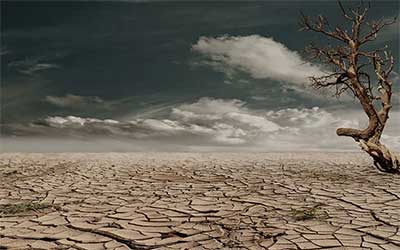‘Curving Waves’- One More Reason For Droughts
In News
Science journal says that almost six out of 10 droughts, in non El Nino years, that occurred throughout the Indian summer- monsoon season up to now century could have been pushed by atmospheric disturbances from the North Atlantic area.
The study was led by researchers on the Centre for Atmospheric and Oceanic Sciences (CAOS), Indian Institute of Science (IISc), Bengaluru.
About
- In an El Niño year, abnormally heat equatorial Pacific waters pull moisture-laden clouds away from the Indian subcontinent.
- The IISc research exhibits that in non-El Nino years, these droughts are a consequence of a sudden and steep drop in rainfall in late August.
- Winds within the higher ambiance are interacting with a deep cyclonic circulation above the abnormally chilly North Atlantic waters.
- The ensuing wave of air currents, referred to as a Rossby wave, curved down from the North Atlantic ‒ squeezed in by the Tibetan plateau ‒ and hit the Indian subcontinent round mid-August, suppressing rainfall and throwing off the monsoon that was attempting to recuperate from the June stoop.
- The wave’s ordinary course is to go from west to east, however not in the direction of the equator.
- The Indian Ocean and Pacific Ocean seem to be at the forefront of all discussions surrounding Indian monsoon droughts.
- It is perhaps time to focus just much on mid-latitude influences, which might aid in getting a better handle on enhanced predictability of monsoon variability.
However, many scientists have different opinion with regard
to this. The Indian Ocean, says Roxy Mathew Koll, a local weather scientist on
the Indian Institute of Tropical Meteorology (IITM), too performs an essential
position in figuring out the efficiency of the monsoon and a number of other
different elements should be thought of to develop a dependable mannequin to
forecast a possible shortfall within the absence of an El Nino.
In 2014, India noticed a 14% rainfall deficit—or a drought—that wasn’t linked to
an El Nino and earlier than that in 1986 and 1985.








